Vanderbilt ADHD Scoring Template
Streamline ADHD symptom assessment with our user-friendly Vanderbilt ADHD Scoring Template, providing practitioners with tools for enhanced cognitive insights.


What is the Vanderbilt assessment scale?
The Vanderbilt Assessment Scale stands as a pivotal diagnostic tool employed by healthcare professionals to assess and diagnose Attention Deficit Hyperactivity Disorder (ADHD) in children aged 6-12 years. Developed by Mark L. Wolraich at the Oklahoma Health Sciences Center, these scales provide an in-depth and comprehensive evaluation of the core symptoms of ADHD and their intricate impact on a child's daily life.
This invaluable diagnostic instrument is bifurcated into two versions: the Vanderbilt ADHD Diagnostic Parent Rating Scale (VADPRS) and the Vanderbilt ADHD Diagnostic Teacher Rating Scale (VADTRS). Each version maintains a similar question format tailored to solicit observations from the parents' and the teachers' perspectives regarding the child's behavior. This dual-perspective approach significantly enriches the diagnostic process, acknowledging home and school's varying environments and expectations.
Comprising a set of 18 core questions, the Vanderbilt scales delve into multifaceted aspects of ADHD symptoms, addressing both inattentiveness and hyperactivity/impulsivity. For instance, questions may explore behaviors such as forgetting homework, difficulty organizing tasks, and observable actions like constant fidgeting or squirming. Beyond these core symptoms, the scales incorporate inquiries regarding disruptive behaviors, oppositional-defiant tendencies, and the potential presence of co-occurring conditions such as anxiety or depression.
Within the school context, the Vanderbilt Assessment Scales become integral tools in identifying ADHD in children. Educators and school psychologists collaboratively administer these scales to gain a comprehensive understanding of a child's behavioral patterns and cognitive functioning. The insights gathered are instrumental in crafting tailored strategies, such as developing Individualized Education Programs (IEPs) and implementing classroom accommodations. These measures aim to create an inclusive and supportive learning environment that addresses the specific challenges associated with ADHD.
The Vanderbilt scales offer several advantages over other ADHD assessment tools:
Standardized scoring: The scales provide a clear and objective way to assess symptoms and compare results to age-appropriate norms.
Multiple perspectives: Gathering information from parents and teachers gives a more holistic view of the child's behavior in different settings.
Focus on both symptoms and impact: The scales assess the presence of symptoms and how they affect the child's daily functioning at home and school.
Flexibility: The scales can be used for initial diagnosis and monitoring progress over time with treatment.
Overall, the Vanderbilt Assessment Scales are a valuable tool for healthcare professionals to accurately diagnose ADHD in children and develop effective treatment plans in pediatric psychology. By providing a comprehensive and standardized assessment, these scales can help children with ADHD receive the support they need to reach their full potential.
Vanderbilt ADHD Scoring Template
Vanderbilt ADHD Scoring Template Example
Who is the scale for?
The Vanderbilt Assessment Scales serve as a specialized and invaluable tool primarily crafted for healthcare professionals, specifically psychologists and psychiatrists specializing in the diagnosis and treatment of Attention Deficit Hyperactivity Disorder (ADHD) in children. Developed by Mark L. Wolraich at the Oklahoma Health Sciences Center, these scales are meticulously designed to empower healthcare professionals to gather comprehensive information from parents and teachers. By leveraging insights from multiple perspectives, these professionals can attain a nuanced understanding of a child's behavior and symptoms, offering a holistic view of child development that spans diverse settings and contexts.
While the primary audience for the Vanderbilt Assessment Scales remains healthcare professionals, the clinical utility of these scales extends beyond the clinical realm. Although not intended for self-diagnosis, they provide an educational resource for parents and educators seeking to enhance their understanding of ADHD diagnosis symptoms and their potential manifestations in children they are connected to. In this context, the scales are an informative starting point for meaningful conversations with children's health quality and healthcare professionals, fostering collaborative efforts between parents, educators, and clinicians. This collaborative approach becomes particularly crucial in navigating and addressing the challenges faced by children with ADHD.
However, it is imperative to underscore that the Vanderbilt Assessment Scales are not intended as a diagnostic tool for the general public. Accurate interpretation and diagnosis can only be provided by qualified healthcare professionals with the expertise to interpret the results accurately and offer a proper diagnosis of ADHD. The scales, therefore, play a pivotal role in enhancing communication and understanding among stakeholders, acting as a bridge between healthcare professionals, parents, and educators.
While the primary target audience for the Vanderbilt Assessment Scales remains healthcare professionals, the scales also contribute significantly to the educational landscape, aiding parents and educators in comprehending potential symptoms in the children they interact with. By facilitating informed discussions and collaborative efforts, these scales play a crucial role in promoting the well-being and effective management of ADHD in children within the community population and a broader community context.
How to score the Vanderbilt Assessment scale
The Vanderbilt Assessment Scales (VADPRS and VADTRS) for diagnosing ADHD in children require proper scoring to provide accurate results. Here's a breakdown of the process, including record keeping, dimensional scoring, diagnostic criteria, and symptom scoring instructions:
Record the scores:
Gather the completed questionnaires: Both parent and teacher versions of performance questions should be filled out.
Use dedicated scoring sheets: These sheets are designed to facilitate the accurate recording of responses. You can find them online or in the Vanderbilt Assessment Scales manual.
Mark the responses: Each question has four options (0-3) indicating the frequency of the behavior (Never, Rarely, Sometimes, Often). Mark the chosen option for each question on the scoring sheet.
Calculate raw scores: Sum the scores for each performance section (Inattentiveness, Hyperactivity-Impulsivity, Total) on the scoring sheet.
Dimensional scoring:
Calculate domain scores: Divide the raw score for each domain (Inattentiveness, Hyperactivity-Impulsivity) by the number of questions in that domain. This gives you an average score for each domain.
Compared to normative tables: The Vanderbilt manual provides age- and gender-normed tables for domain and total scores. Compare the calculated domain scores to the appropriate table to determine if they fall within the "normal" range, "borderline" range, or above the criteria "clinically significant" range.
Symptom scoring:
Identify positive symptoms: Each question has a designated "positive" symptom indicator. These indicators are marked on the scoring sheet or manual.
Count positive symptoms: Add the total number of positive symptoms marked for each domain (Inattentiveness, Hyperactivity-Impulsivity).
Compare to cut-off scores: The manual provides cut-off scores for the number of positive symptoms required for a diagnosis of ADHD in each presentation (Predominantly Inattentive, Predominantly Hyperactive-Impulsive, Combined).
Interpretation and next steps:
Consider all results: Look beyond just the dimensional and symptom scores. Analyze the pattern of responses and consider the context of the child's environment and behavior in different settings.
Consult clinical expertise: A qualified healthcare professional will interpret the scores in conjunction with other clinical findings, such as interviews and observations, to make a diagnosis and determine appropriate treatment options.
Commonly asked questions
Dimensional scoring analyzes the average frequency of symptoms in each domain (e.g., inattentiveness, hyperactivity-impulsivity), while symptom scoring counts the total presence of specific "positive" symptoms.
Compare your calculated scores to the Vanderbilt manual's age- and gender-normed tables. Scores within the "clinically significant" range suggest potential ADHD. It is essential to consult with a Doctor or other mental health specialist in developmental and behavioral pediatrics to get an official diagnosis.
Gathering information from both perspectives provides a more comprehensive view of the child's behavior across different settings. Teachers may pick up on behaviors such as careless mistakes, difficulty organizing tasks, difficulty waiting, difficulty playing, physical fights, quiet play activities, academic performance, school assignments performance, and other careless mistakes that may not be noticeable in the home environment.
No, these scales are a valuable tool for assessment, but diagnosis requires professional interpretation and consideration of other clinical findings related to the child's behaviors.


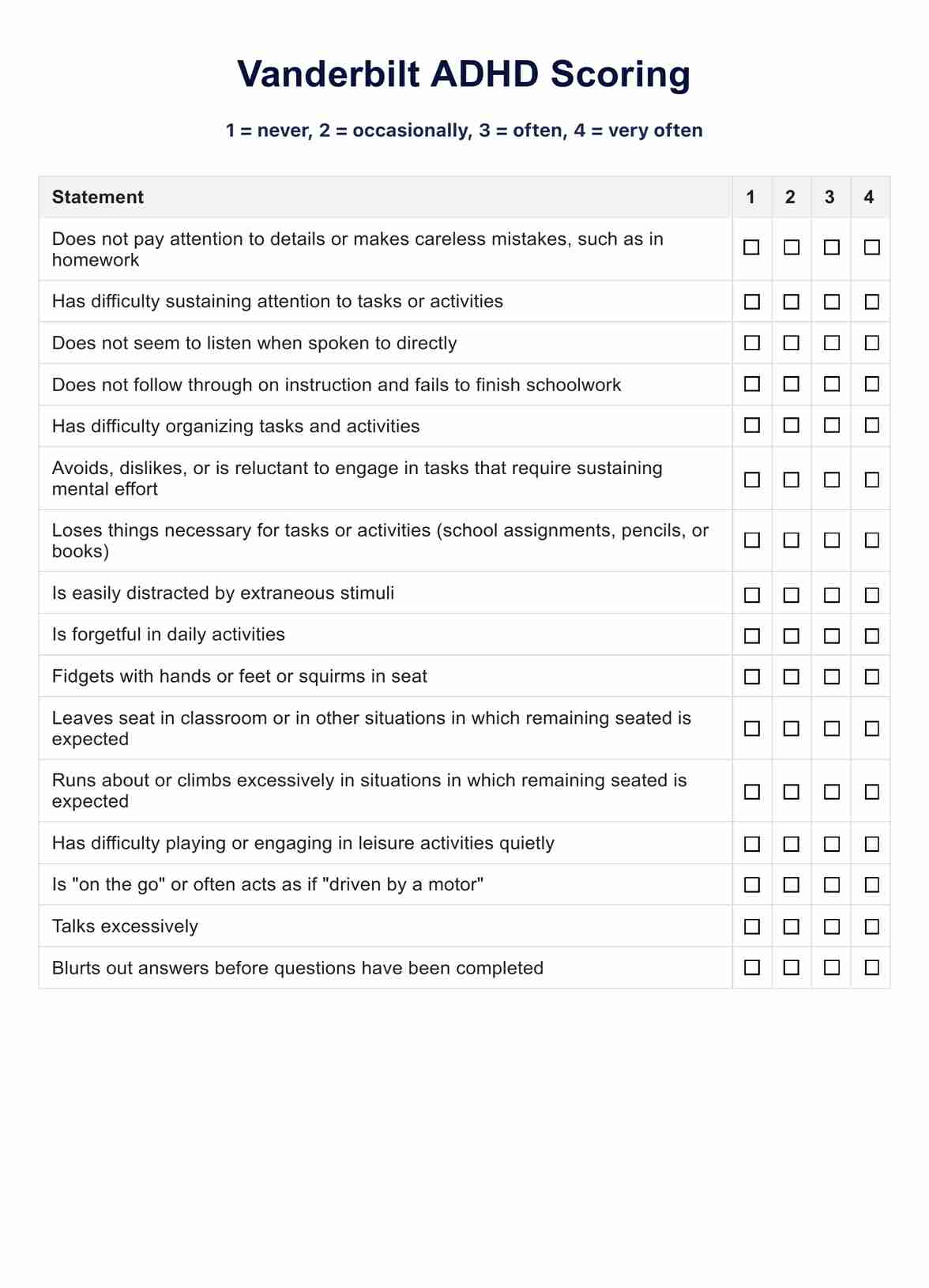
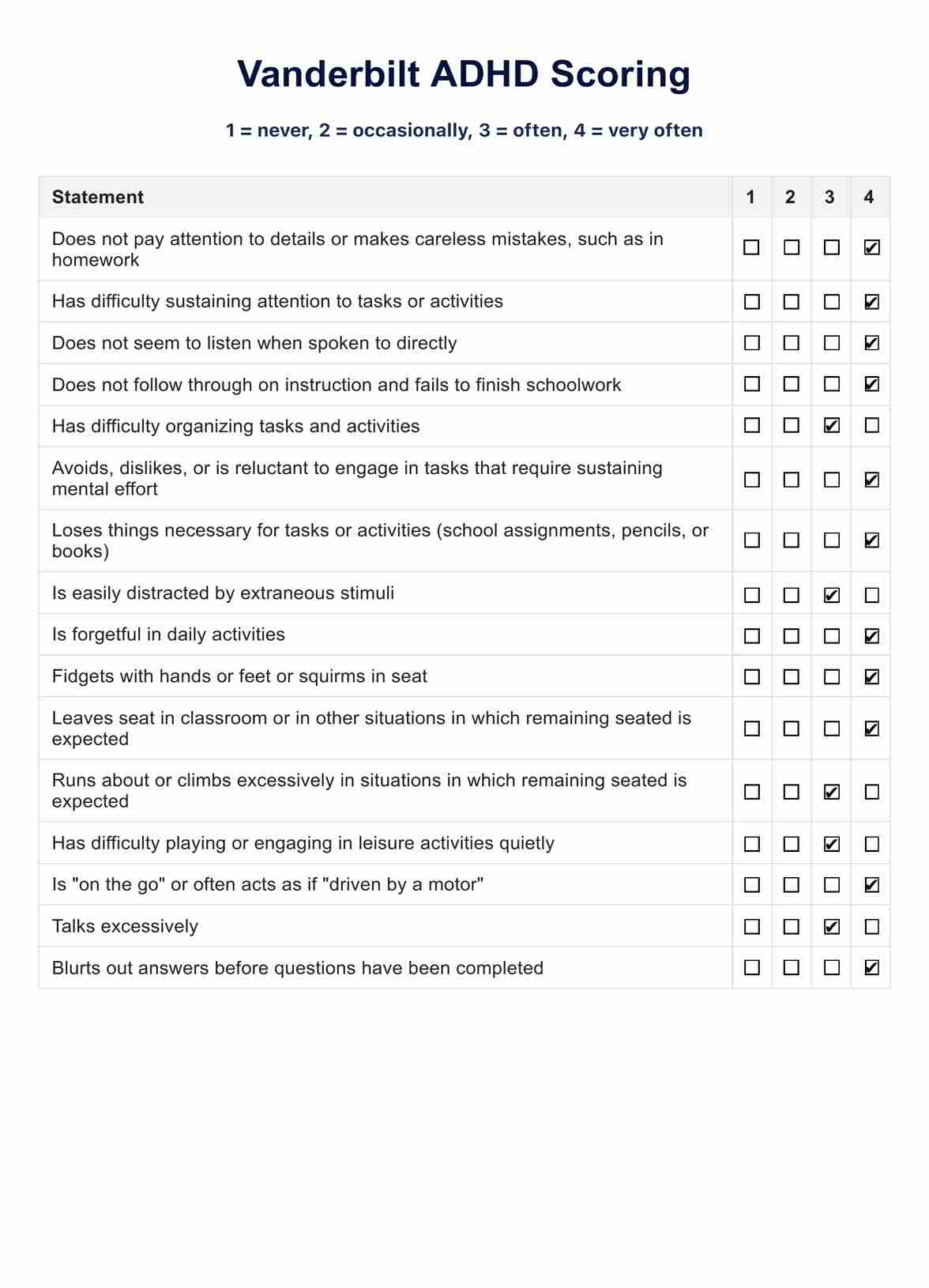

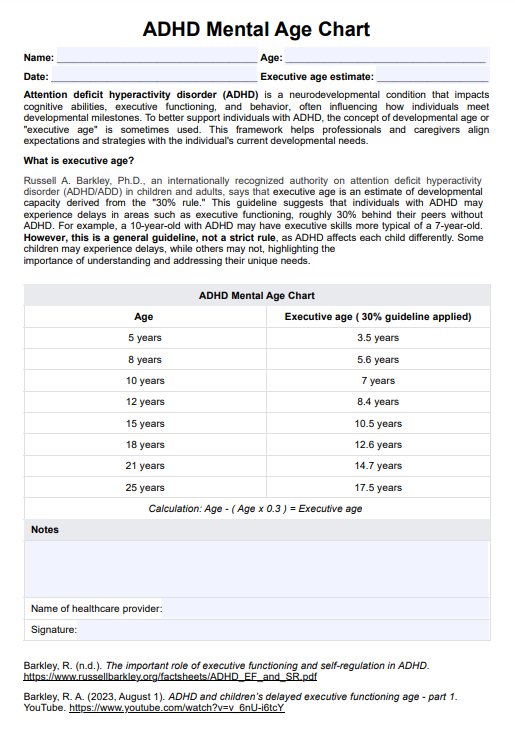
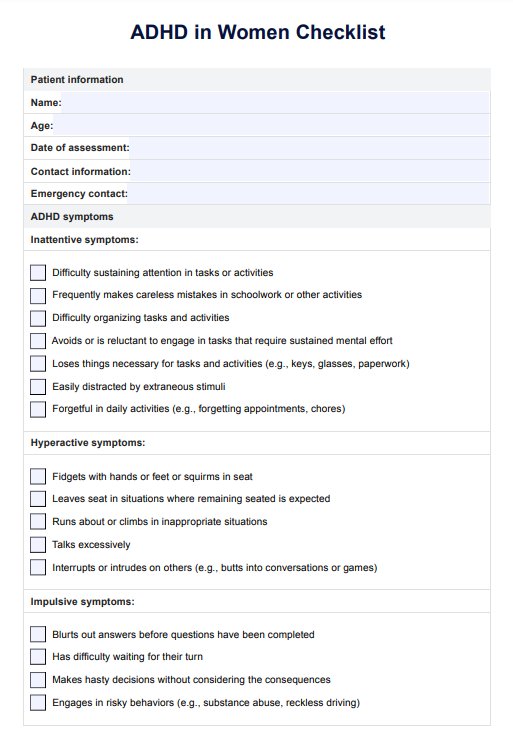
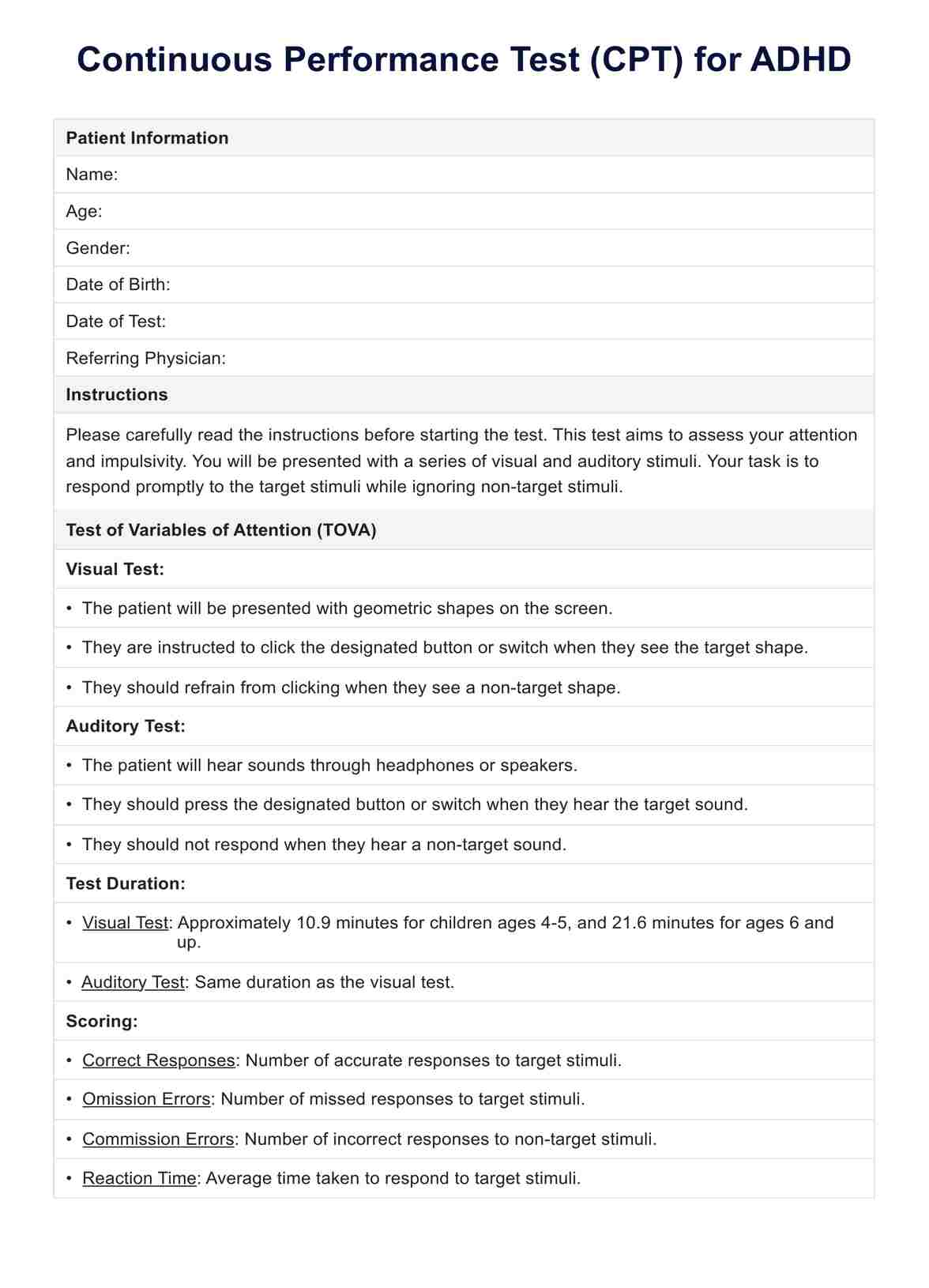
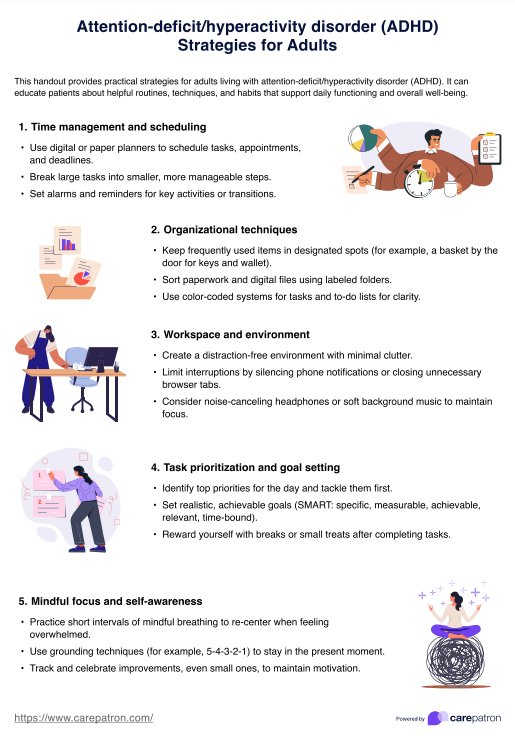
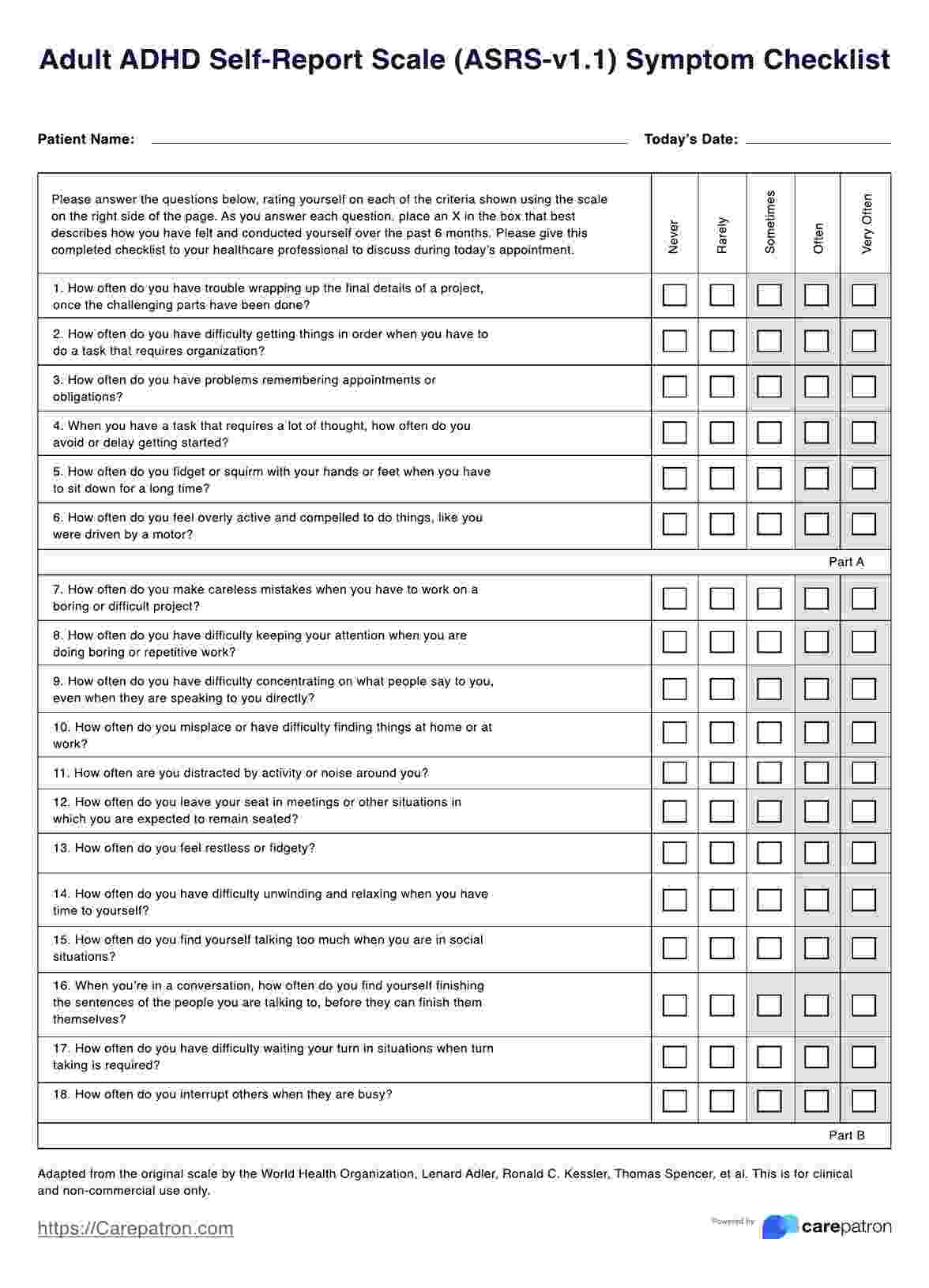
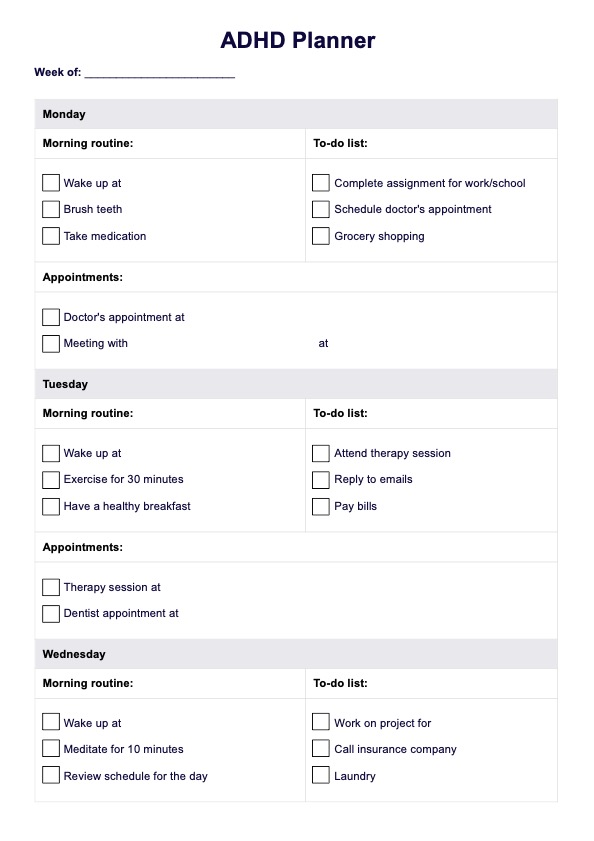
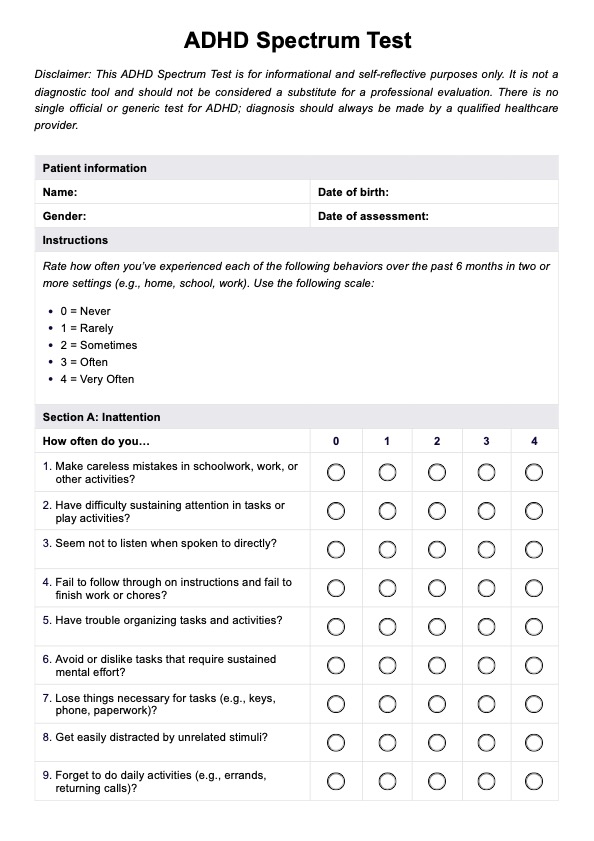
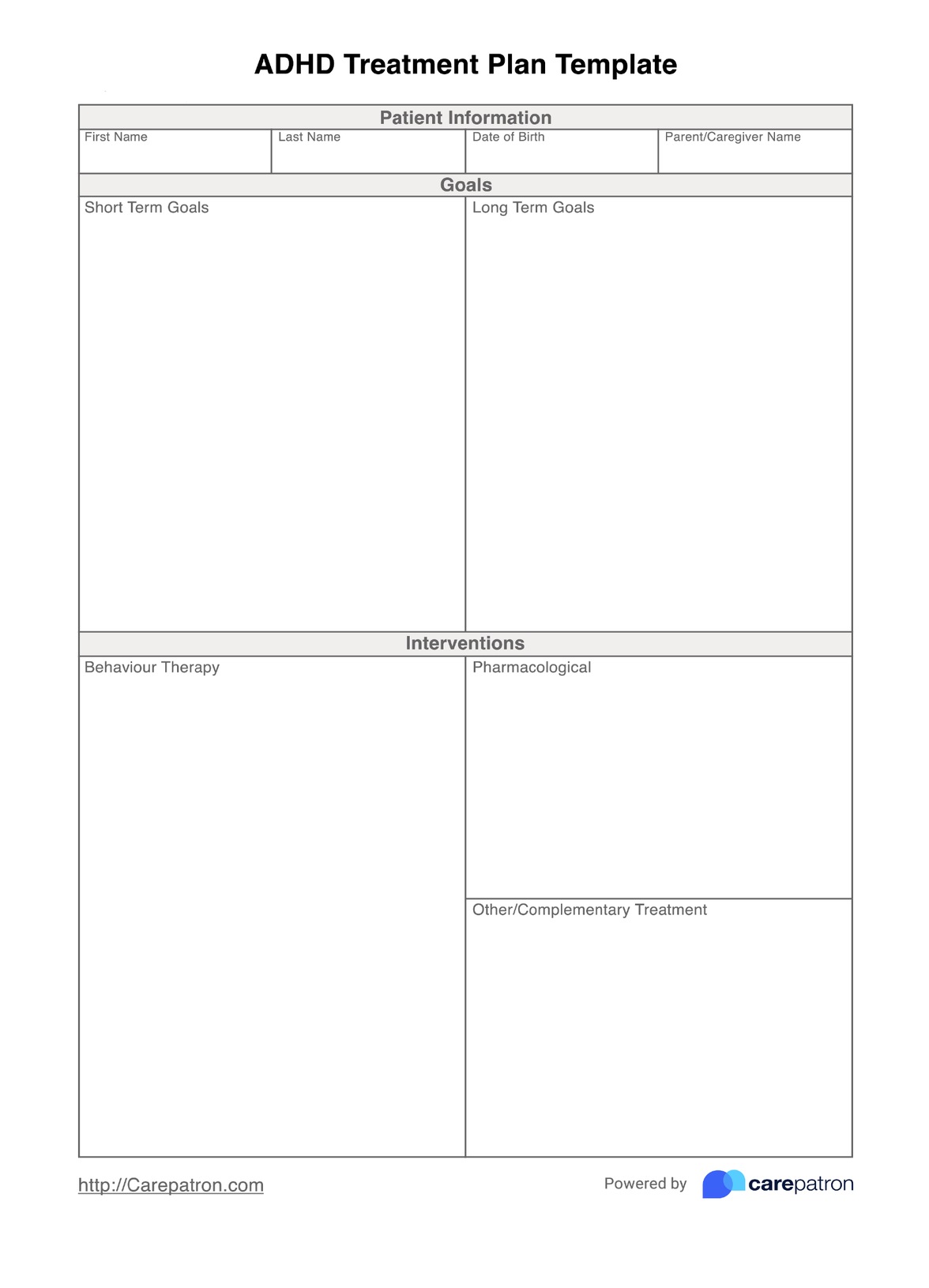
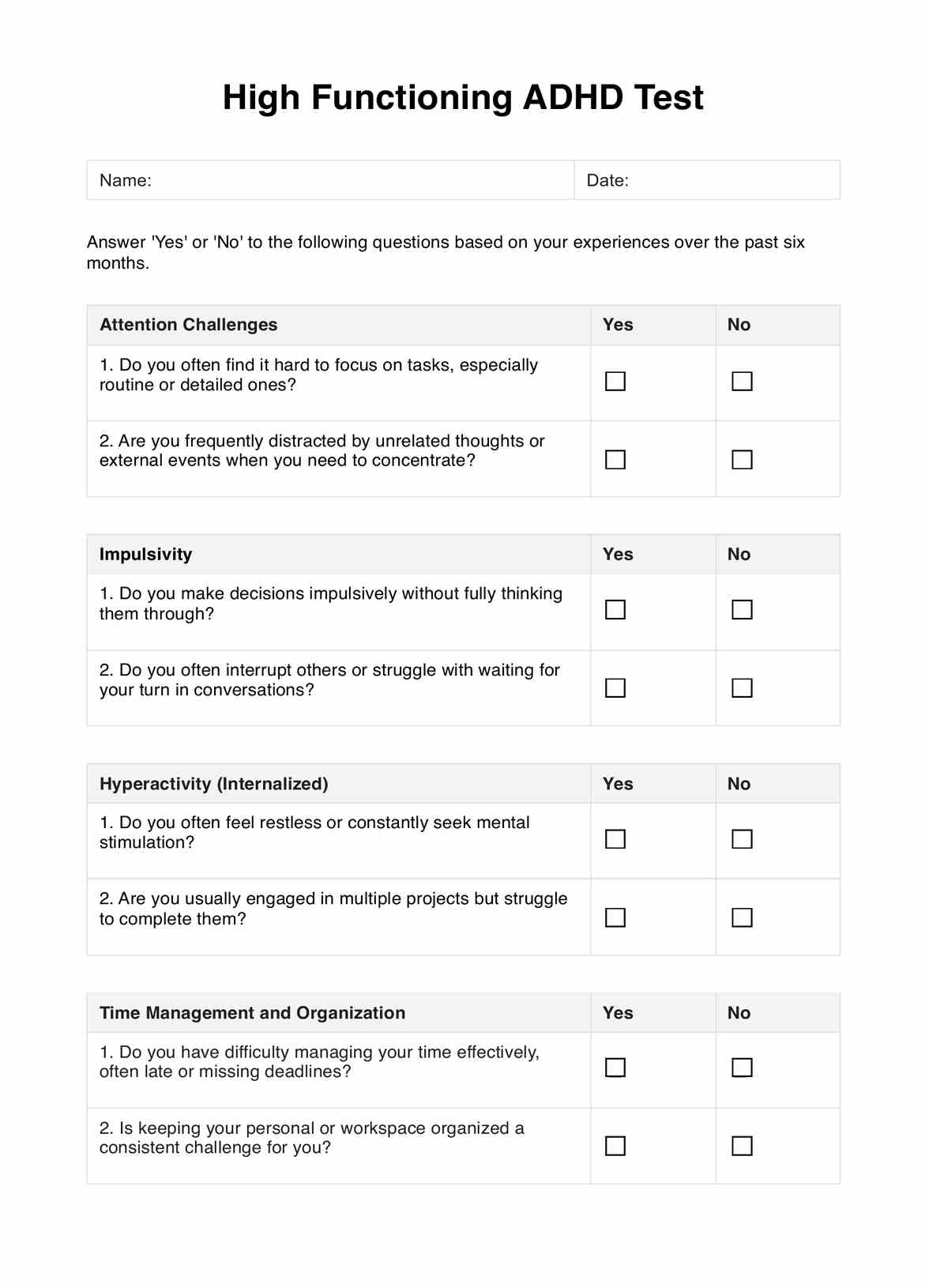
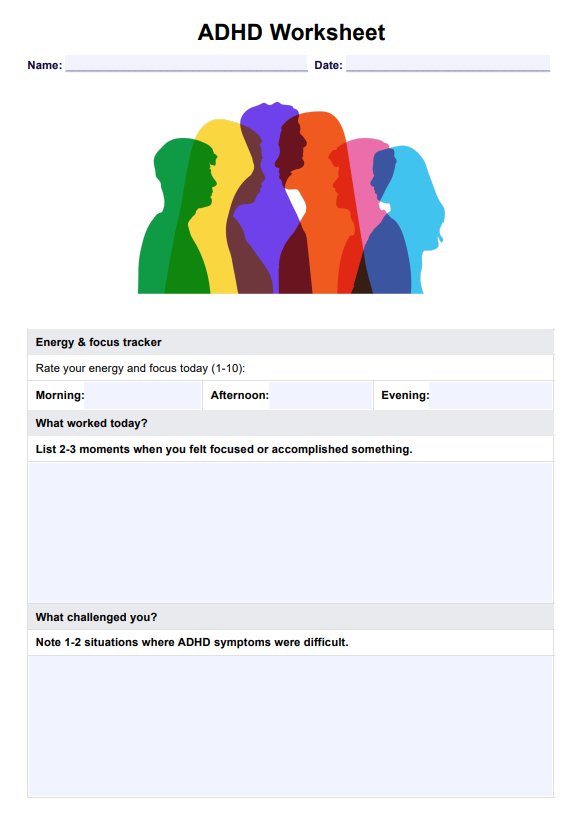
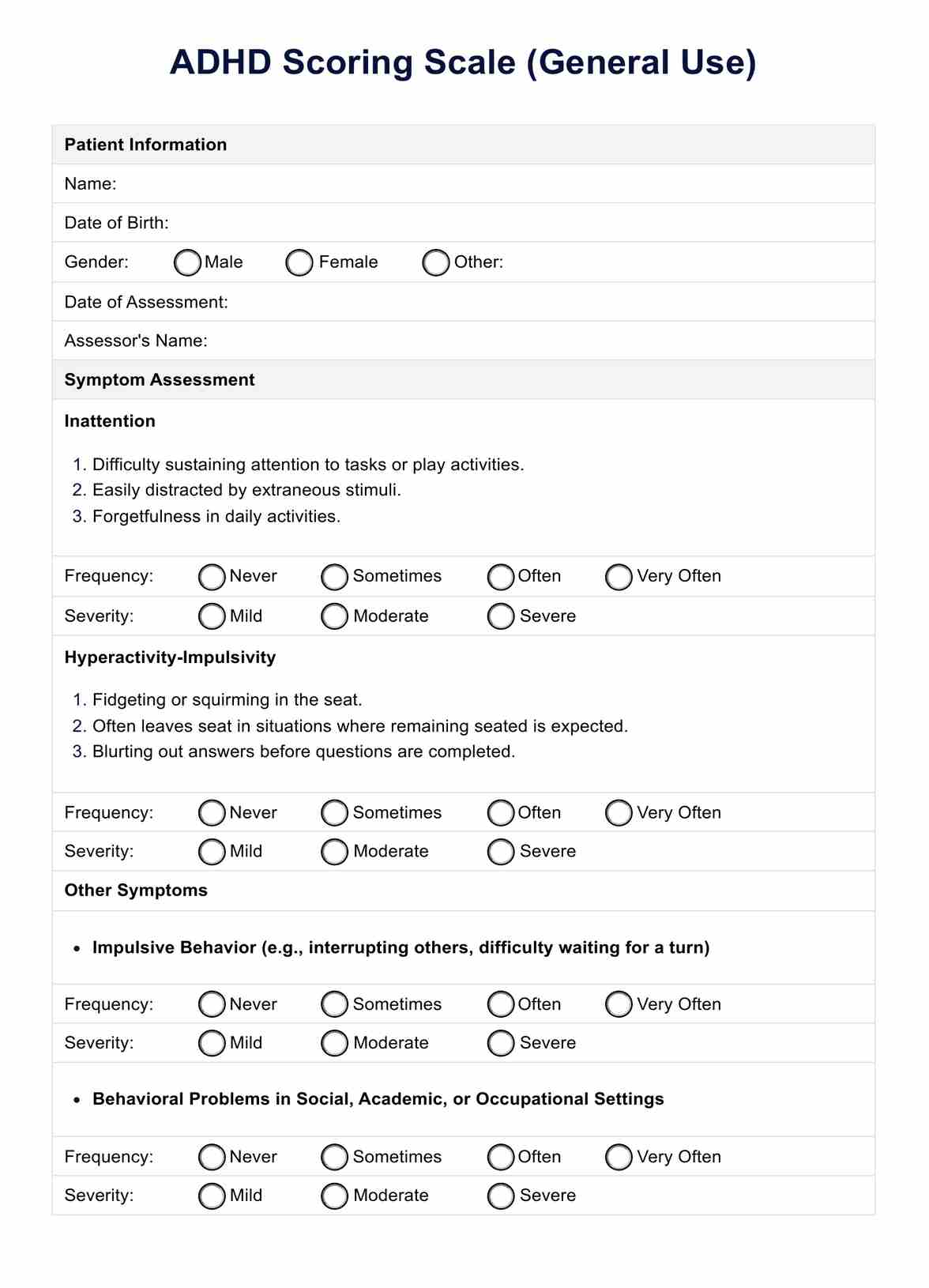
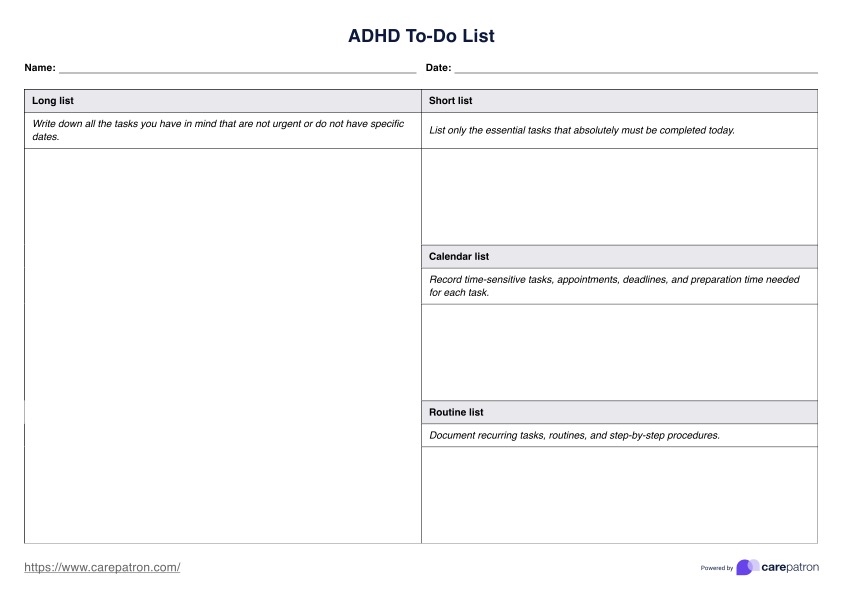
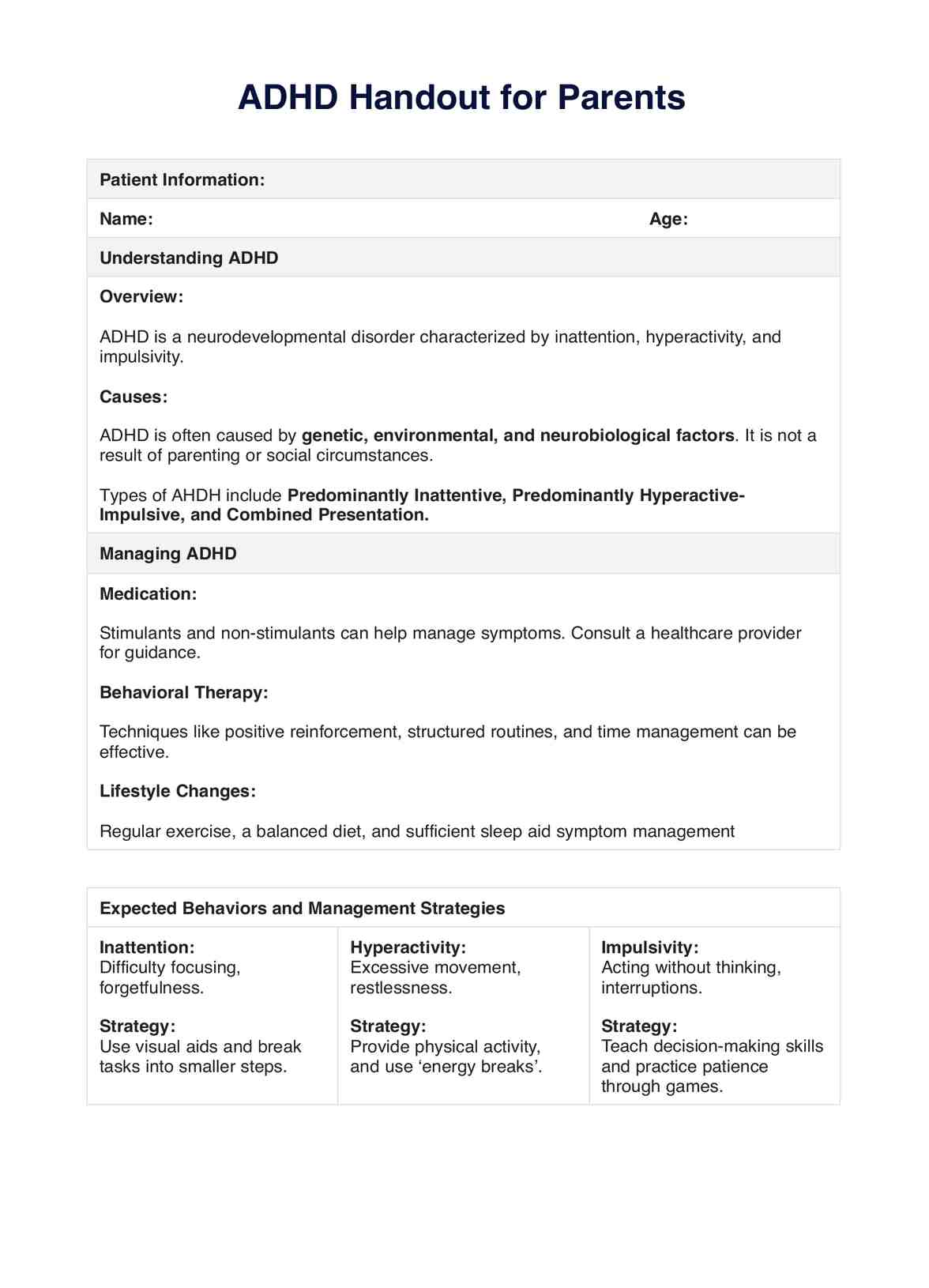
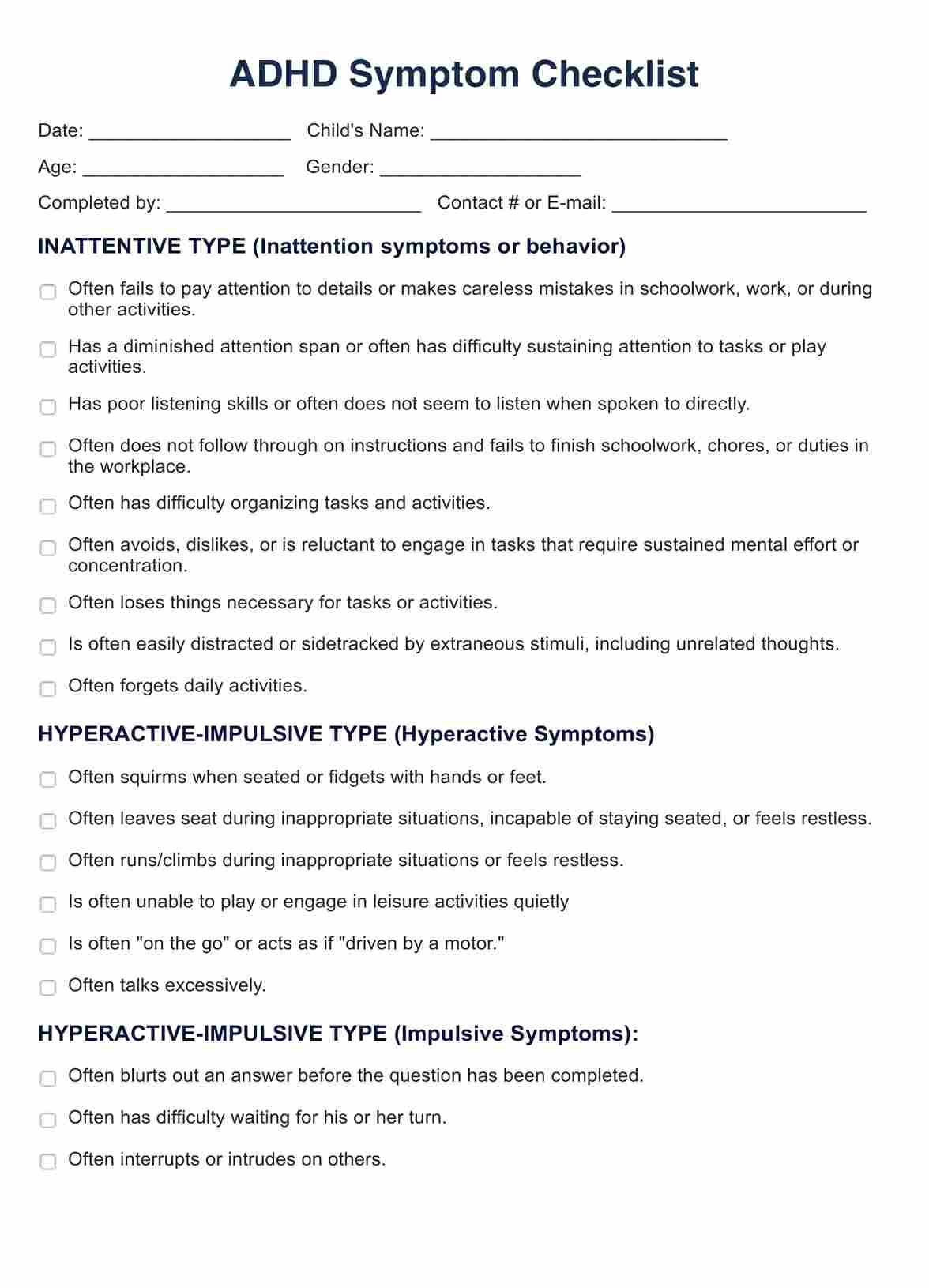
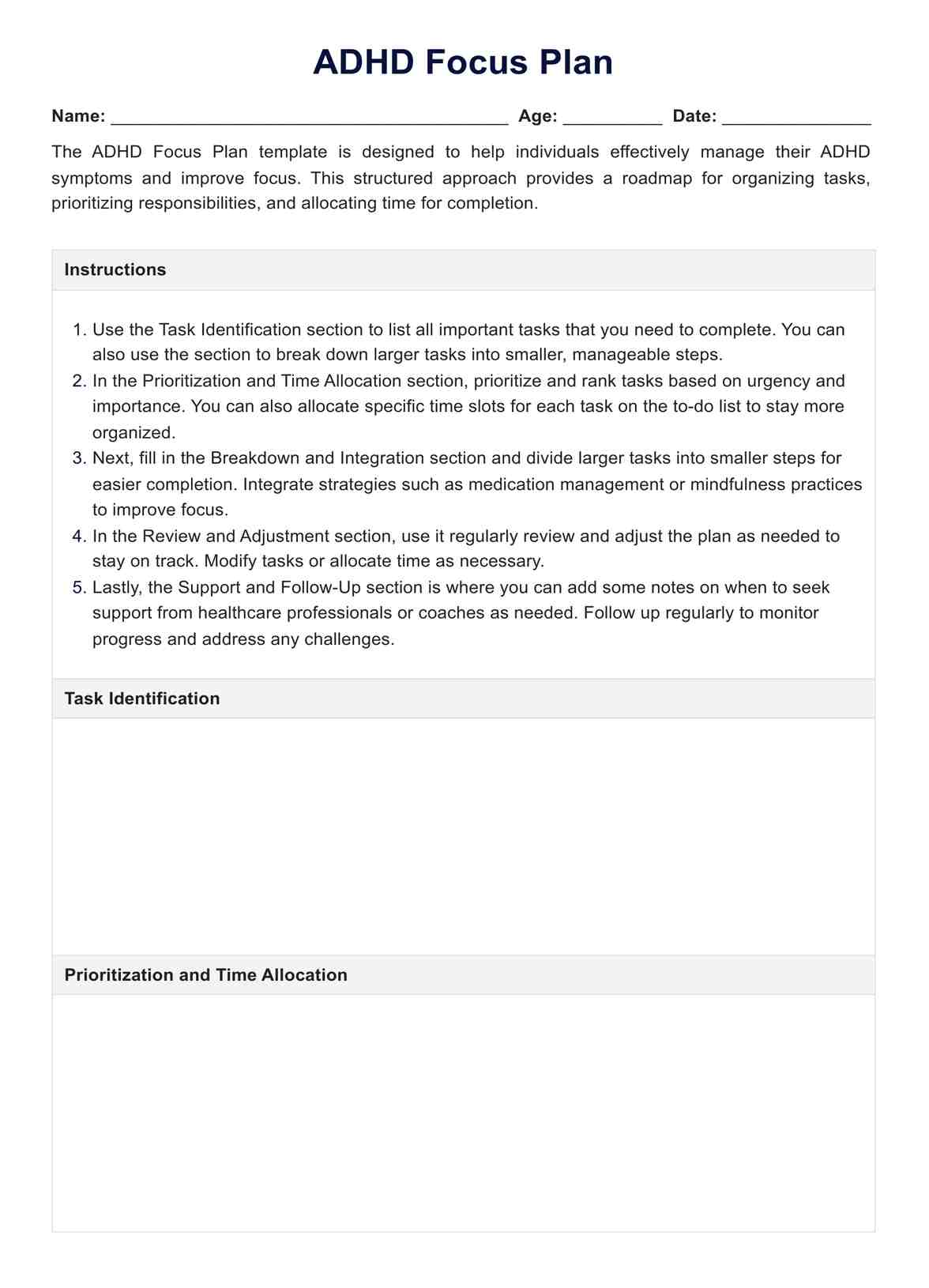















-template.jpg)






















































































